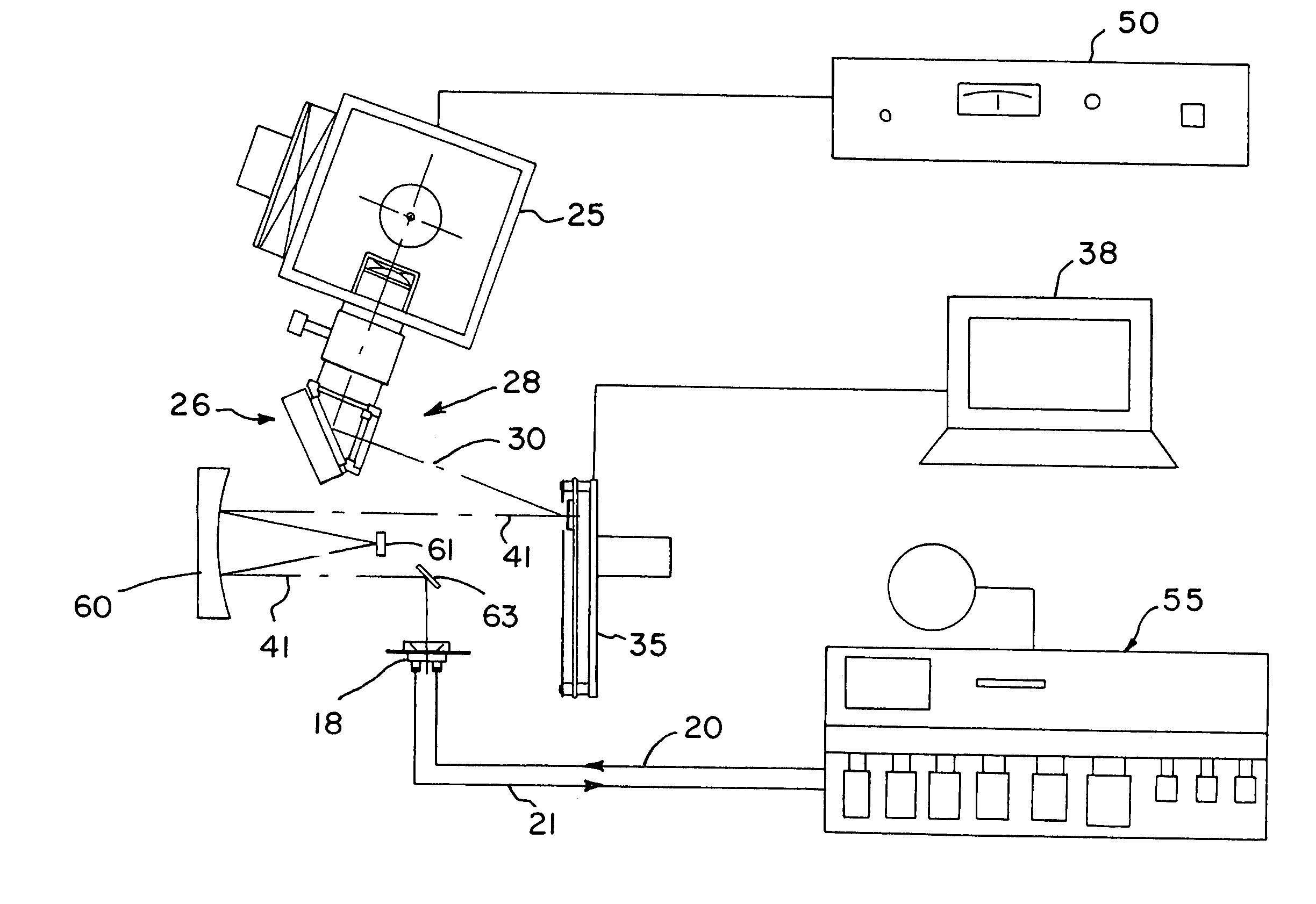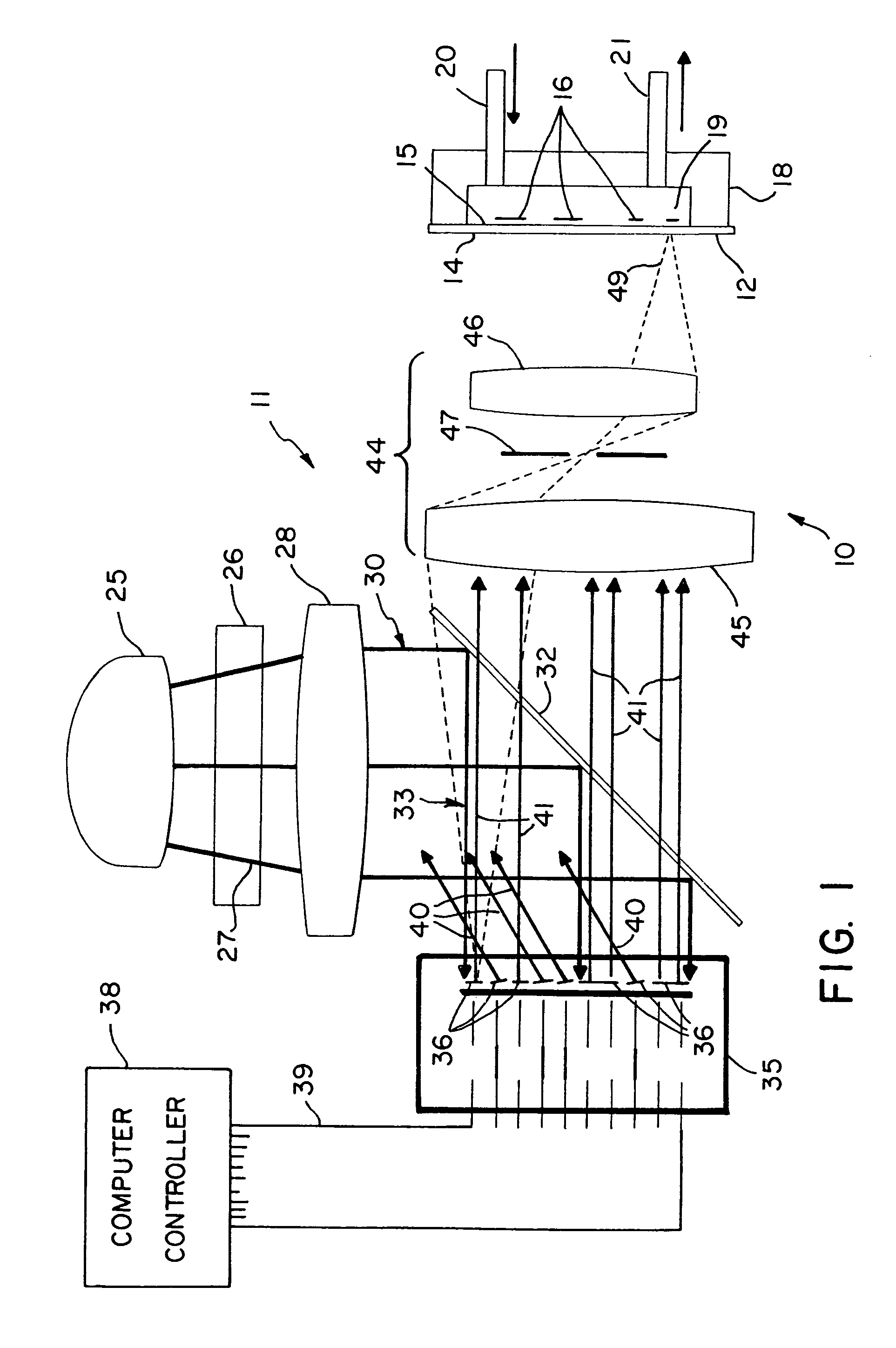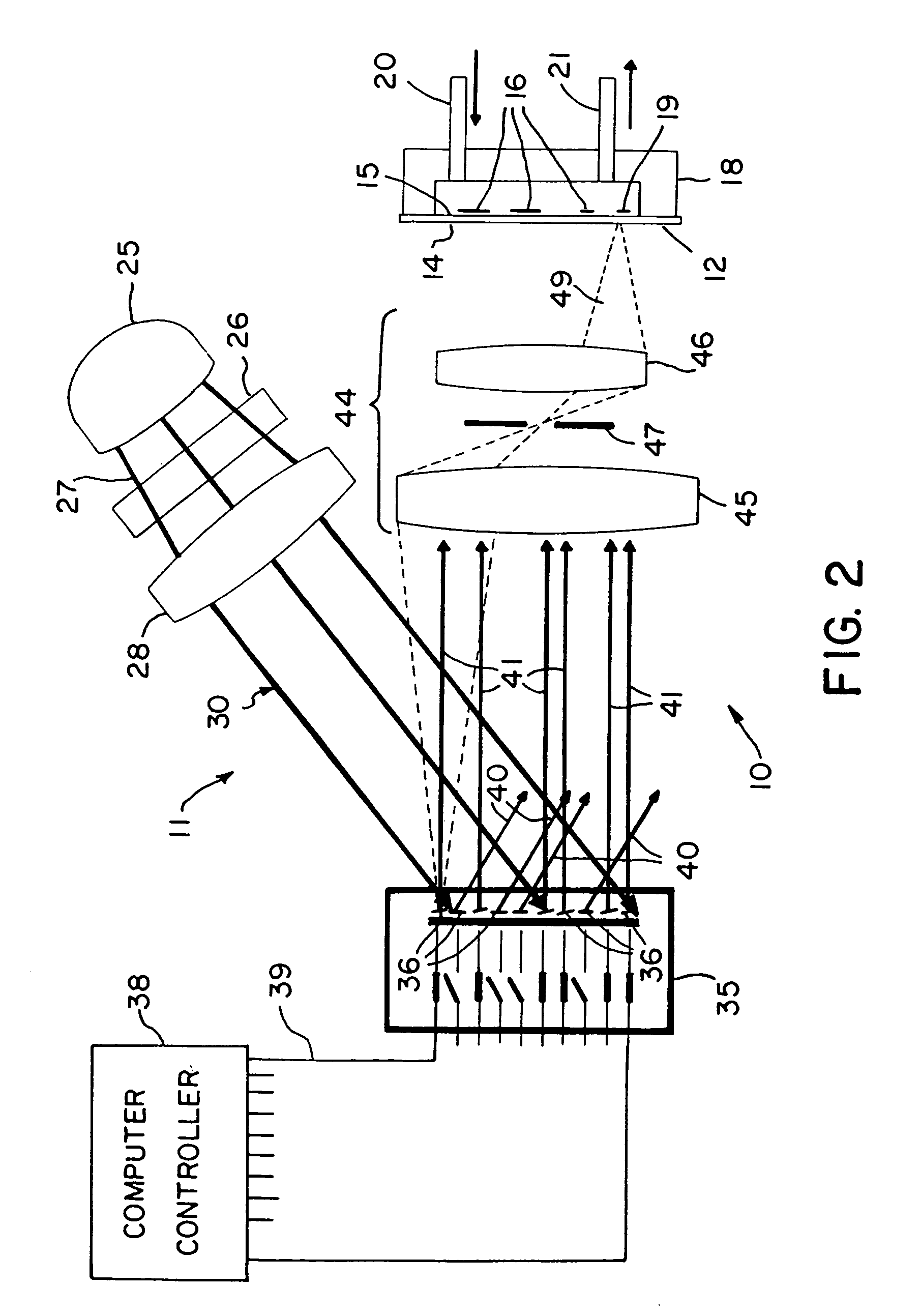Methods for the synthesis of arrays of DNA probes
a synthesis method and array technology, applied in the field of biology, can solve the problems of long processing time, high cost, laborious and time-consuming conventional dna sequencing using electrophoresis, etc., and achieve the effect of avoiding time-consuming manipulation and avoiding significant costs and time delays
- Summary
- Abstract
- Description
- Claims
- Application Information
AI Technical Summary
Benefits of technology
Problems solved by technology
Method used
Image
Examples
Embodiment Construction
[0028]With reference to the drawings, an exemplary apparatus that may be used for DNA probe array synthesis, polypeptide synthesis, and the like is shown generally at 10 in FIG. 1 and includes a two-dimensional array image former 11 and a substrate 12 onto which the array image is projected by the image former 11. For the configuration shown in FIG. 1, the substrate has an exposed entrance surface 14 and an opposite active surface 15 on which a two-dimensional array of nucleotide sequence probes 16 are to be fabricated. For purposes of illustration, the substrate 12 is shown in the figure with a flow cell enclosure 18 mounted to the substrate 12 enclosing a volume 19 into which reagents can be provided through an input port 20 and an output port 21. However, the substrate 12 may be utilized in the present system with the active surface 15 of the substrate facing the image former 11 and enclosed within a reaction chamber flow cell with a transparent window to allow light to be projec...
PUM
| Property | Measurement | Unit |
|---|---|---|
| wavelengths | aaaaa | aaaaa |
| length | aaaaa | aaaaa |
| wavelength | aaaaa | aaaaa |
Abstract
Description
Claims
Application Information
 Login to View More
Login to View More - R&D
- Intellectual Property
- Life Sciences
- Materials
- Tech Scout
- Unparalleled Data Quality
- Higher Quality Content
- 60% Fewer Hallucinations
Browse by: Latest US Patents, China's latest patents, Technical Efficacy Thesaurus, Application Domain, Technology Topic, Popular Technical Reports.
© 2025 PatSnap. All rights reserved.Legal|Privacy policy|Modern Slavery Act Transparency Statement|Sitemap|About US| Contact US: help@patsnap.com



